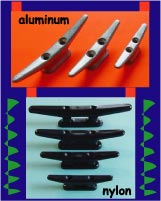Korean High Schoolers' Second Yacht Building Story
We introduced our yacht named 'HD24' - which was based on Christer Bystrom's Stella - on March 6th, 2012. She was our first yacht, and when we sailed her, it turned out she wasn't exactly the world's easiest yacht to change her directions. By that I meant, Mr. Koo, who is in charge of our club, was almost swept away to the other side of river on her maiden voyage. After that, we've figured out that it was due to the flat, nearly square bottom of her.
In the meanwhile, we finally succeeded in contacting 'Phil Bolger & Friends Inc.' in September, 2011 at the cost of endless faxing and emailing throughout our summer vacation. We received the plans for Queen Mab in the following month, which was to be our second yacht project: it was so timely that it arrived in Seoul - from far away Massachusetts - just as we finished the previous one. Building Queen Mab took us more than a half year this time.
First, as we had done with HD24 before, we fabricated backbone and frame, using 2400*1200*7.5mm larch plywood from Brazil. Surprisingly, it only took us less than a day. The procedure wasn't very different from our previous yacht and we were halfway convinced that this was going to take less than couple months.
No such luck. Attaching planks was literally a painstaking work. Applying epoxy on them, we attached planks from the bottom to side deck. Despite the fact that we used both epoxy and clamps to keep the backbone still, however, we left not-so-small gaps within her planks, and in result the yacht became a bit bulkier than our original plan: it's the reason why she looked more like a duck when sailing the river, rather than a fairy queen as her name implied.
After that, we linked transom and the bottom with small nails and considerable amount of epoxy. Having the bottom and the side deck completed, it was obvious that she was still pretty light and easy to turn over whenever necessary despite the amount of epoxy we'd applied.
We made mast clamps, center board, and then a couple of oars. We made use of spruce timbers that had been seasoned for at least two decades at the corner of club room.
In order to waterproof her, we put glass fiber on vulnerable segments and varnished whole body; this led to her being even heavier. Around this point, it was no longer possible to lift her with one hand though she was still light enough for a yacht.
She was almost done by then except for some sandpapering and painting, which, I dare say, were the hardest labor of all of this yacht-making. After we gave the last coating to her, she was on a work table shinning like a new penny.
Last time when we carried HD24 to the Han River behind our school, a heavy wooden-made wagon made us sweat a lot. Therefore, a need for a new trailer to carry her occurred to us. We decided to make that trailer as light as possible as we did on our yachts and used wheels form a wheelchair, which had been in our club room, and some carbon pipes for building. By this point you might think our club room must be quite messy, and I have to say that this room is more like a chamber of secrets than any other ordinary club room.
The day we gave her maiden voyage was a warm day of June with just enough winds. She certainly was beautiful, though she seemed like a duckling, and was much easier to sail than the last one, so I guess we can safely count her a success.
|


























